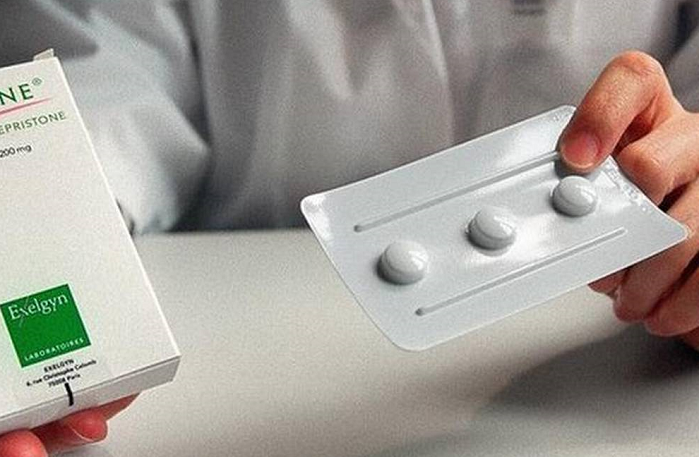As abortion activists push the Biden administration to get rid of safety requirements for the abortion drug mifepristone, a new study suggests it likely is much more dangerous for women than many claim.
The study found “glaring deficiencies” that suggest many complications are not being reported. “Deaths and Severe Adverse Events after the use of Mifepristone as an Abortifacient from September 2000 to February 2019” was published in Issues in Law & Medicine in January.
The abortion drug mifepristone, coupled with a second drug, mifeprostol, is used to abort unborn babies up to 10 weeks of pregnancy in the United States. Because of the risks to the mother, the U.S. Food and Drug Administration requires abortion facilities to administer the drug in-person after an examination.
However, abortion advocacy groups are lobbying the Biden administration to drop these safety requirements and allow the drug to be distributed by telemedicine or mail-order, meaning the mother may never see a doctor or have an ultrasound before she takes the drug and aborts her unborn baby.
Doing so may be dangerous – potentially even deadly – to the mother as well as her unborn baby.
The researchers concluded that deregulating the abortion drug could cause more harm to mothers as well as their unborn babies, and current reporting requirements for the drug are insufficient.
Follow LifeNews on the MeWe social media network for the latest pro-life news free from Facebook’s censorship!
“Significant morbidity and mortality have occurred” after women take the abortion drug, they wrote, noting the high risk connected with an undetected ectopic pregnancy.
“A pro-abortion ultrasound should be required to rule out ectopic pregnancy and confirm gestational age,” the study states. “The FDA [complications reporting] system is inadequate and significantly underestimates the adverse events from mifepristone.”
Live Action News reports more:
Abortion pill clients experiencing a complication are more likely to receive care from an emergency center than the abortion facility where they obtained the pills, according to an analysis of adverse events reports (AERs) submitted to the Food and Drug Administration (FDA) by abortion pill manufacturer Danco.
[For the study], a team of over 30 board certified physicians spent three years reviewing thousands of pages of AERs and discovered glaring deficiencies in reporting on abortion pill complications and deaths. They also found that more than 60% of the surgeries due to abortion pill complications were not handled by the abortion facility, increasing the potential for large amounts of underreported complications.
According to the study, fewer than half of the women who suffered complications went back to the abortion facility for treatment; many went to the emergency room instead.
The most common complications included a failed abortion, an incomplete abortion (meaning part of the unborn baby or placenta remained in the womb), infection and a missed ectopic pregnancy, according to the research.
Of the 3,197 complication reports that they examined, the researchers found 20 deaths, 529 life-threatening complications, 1,957 severe, 151 moderate and three mild complications. An additional 537 had insufficient information to determine the severity of the woman’s complications.
Almost 500 complications were women who remained pregnant. Of those, 102 chose to keep their babies while 148 chose to have second abortions; however, the outcome of 201 others remains unknown, according to the report.
“Some of the patient deaths were not known to the abortion provider until they saw the death in an obituary or were contacted by an outside source,” the researchers wrote. “Because of this, in addition to abortion providers, hospitals, emergency departments, and private practitioners should be required to report [complications].”
The problem is only getting worse. Starting in 2016, under the Obama administration, the FDA stopped requiring Danco to report non-fatal abortion complications to the government, according to the report.
“[T]he analysis of the [complication reports] revealed glaring deficiencies… Throughout the reports, there was also a lack of detail and many patients who were simply ‘lost to follow-up,’” the researchers wrote.
The American Association of Pro-Life Obstetricians and Gynecologists is urging the FDA to strengthen reporting requirements so that women can know the risks of the abortion drug. Some of its members participated in the study.
England de-regulated the abortion drug during the pandemic last year and saw disastrous consequences. There have been numerous reports of health and safety problems, including two women who died after taking the drugs. In another case, authorities are investigating how a woman who was 28-weeks pregnant received the abortion drugs in the mail and used them to abort her viable, late-term unborn baby.
In the United States, mifepristone has been linked to at least 24 women’s deaths and 4,000 serious complications. Risks of mifepristone and misoprostol, the most common abortion drugs taken together to abort and then expel an unborn baby from the womb, include excessive bleeding, severe abdominal pain, infection and hemorrhage.
A 2009 study “Immediate Complications After Medical Compared With Surgical Termination of Pregnancy,” in Obstetrics and Gynecology found a complication rate of approximately 20 percent for the abortion drugs compared to 5.6 percent for surgical abortions. Hemorrhages and incomplete abortions were among the most common complications.








